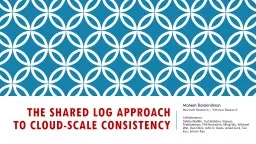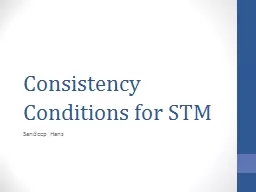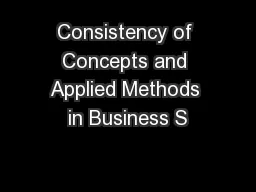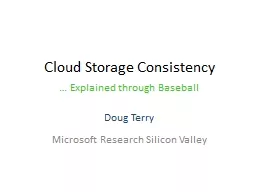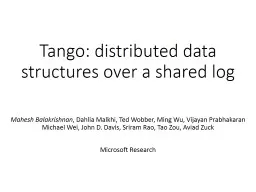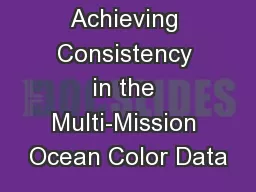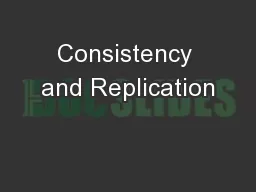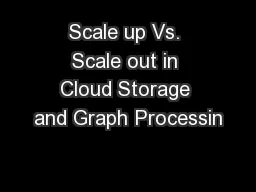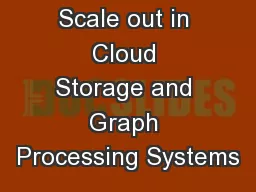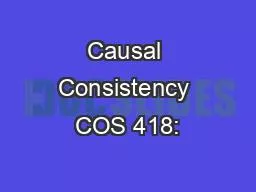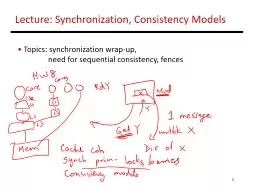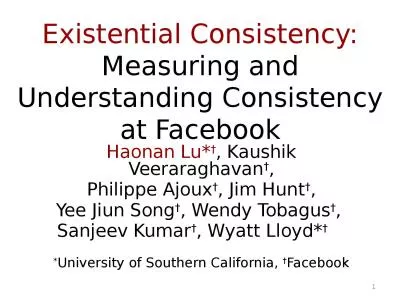PPT-the shared log approach to cloud-scale consistency
Author : giovanna-bartolotta | Published Date : 2018-09-24
Mahesh Balakrishnan Microsoft Research VMware Research Collaborators Dahlia Malkhi Ted Wobber Vijayan Prabhakaran Phil Bernstein Ming Wu Michael Wei Dan Glick
Presentation Embed Code
Download Presentation
Download Presentation The PPT/PDF document "the shared log approach to cloud-scale c..." is the property of its rightful owner. Permission is granted to download and print the materials on this website for personal, non-commercial use only, and to display it on your personal computer provided you do not modify the materials and that you retain all copyright notices contained in the materials. By downloading content from our website, you accept the terms of this agreement.
the shared log approach to cloud-scale consistency: Transcript
Download Rules Of Document
"the shared log approach to cloud-scale consistency"The content belongs to its owner. You may download and print it for personal use, without modification, and keep all copyright notices. By downloading, you agree to these terms.
Related Documents

